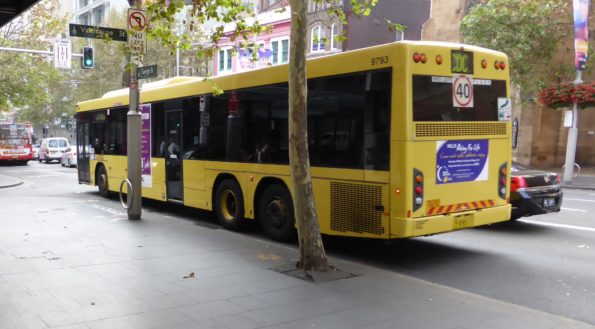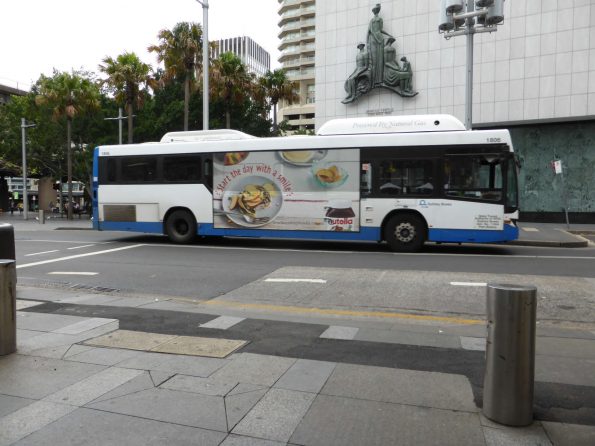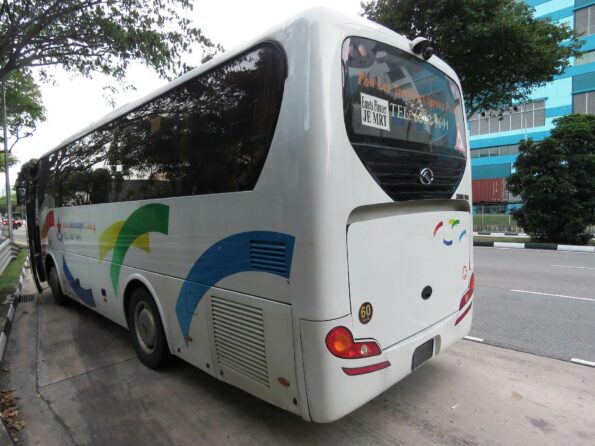Blind spots are the areas a driver can’t see when looking in their mirrors or by turning their head. They are reduced dramatically by proper mirror placement and use of cameras, but they are very difficult to eliminate.
Small vehicles, cyclists, scooterists and pedestrians are most at risk in large vehicles’ blind spots because they can remain in there for extended time periods without realising.
Truck blind spots
The main blind spots for a truck driver are:
- Immediately behind the trailer, in a narrowing triangle. The longer the truck, the longer this triangle, so watch for road trains. This space means vehicles tailgating the truck are not visible to the driver. Pedestrians walking behind the truck are not visible, either
- Immediately behind the cab (unless driving a day cab with a rear window), or the body of the truck, for example between a truck and trailer combination
- Immediately in front of the bonnet (unless there’s a front mirror angled down on cab-over trucks; there’s no solution for conventional bonneted trucks). This can hide a child or smaller adult crossing the road while the driver is waiting at an intersection – never cross in front of a truck while it’s waiting to go, unless you’ve made eye contact with the driver
- Next to the passenger door, out around 1-2 metres (unless there’s a top mirror), and in a gradually broadening arc extending around 45 degrees backwards behind the B pillar (depending on mirror placement)
- Next to the driver’s door, out around 0.5-1 metres, and in a gradually broadening arc extending around 45 degrees backwards behind the B pillar (depending on mirror placement)
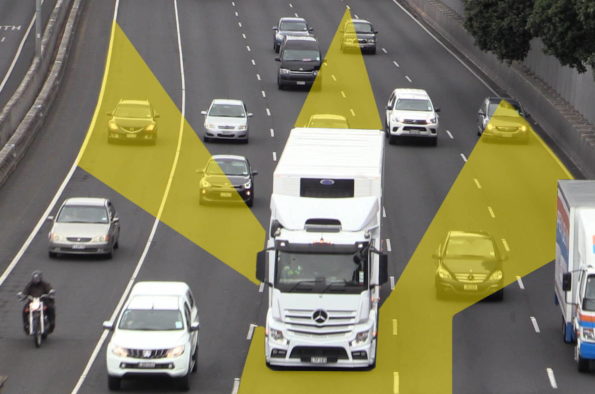
The driver will also find it difficult see the front quarter of the top metre or so of the truck or trailer, if it is taller than the cab. This presents a risk when low-speed manoeuvring around awnings and low tree limbs.
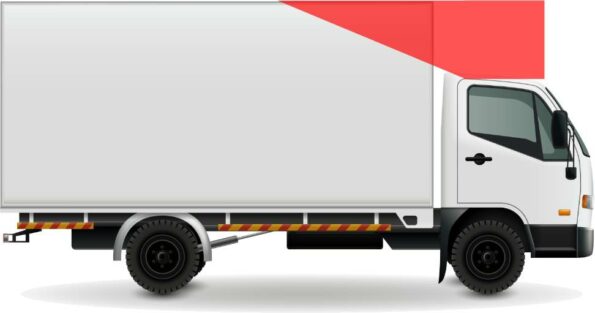
Bus blind spots
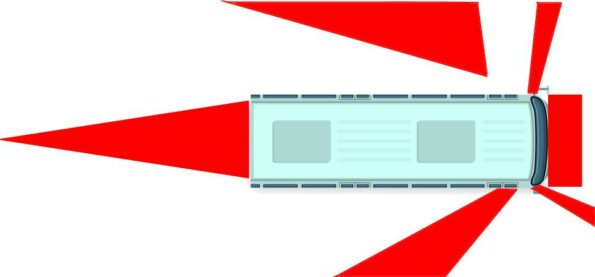

What reduces blind spots for heavy vehicle drivers?
- Top mirrors – convex mounted above the passenger window
- Front mirrors
- Low door glass
- Cameras
- Day cabs (i.e. one with a rear window as opposed to a sleeper unit)
- Wing mirrors are set further forward than the A pillar (applies mostly to buses)
What increases blind spots for heavy vehicle drivers?
- Poor weather
- Passenger (can obstruct view)
- Poor mirror placement
- Dirty mirrors
- Dirty windows
- Sunstrike
- Large loads
- Tall loads
- Tall seating position (e.g. the bottom of the windscreen on a Kenworth cab-over prime mover is over 2m from the ground; even an adult can be in the blind spot)
- Opaque signage on windows (very common on buses)
